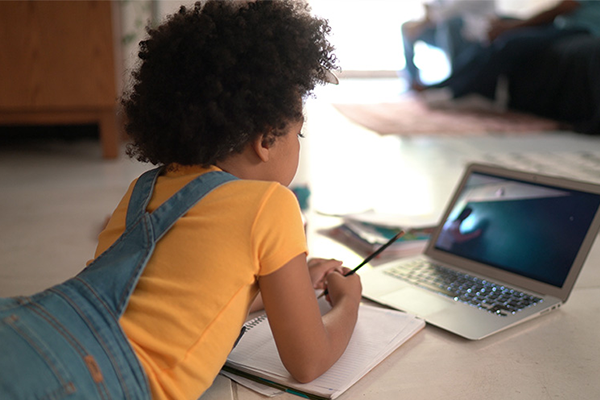Education success in a year unlike any other
In the fall of 2020, a child on case manager Sara Crotteau’s caseload was struggling in school, and the long, uncertain COVID-19 school year loomed ahead.
The fifth-grade student couldn’t read — a significant barrier to academic success. Minnesota has identified the end of third grade as the expected time for students to be proficient in beginning reading. Reading, which means not only knowing and combining letters, sounds and words but making meaning from text, is key to learning. It’s a developmental milestone in a child’s overall educational experience.
Through her work with this family, Crotteau observed the child “was connected to a bunch of services already, but still struggling.”
Enter the county’s Education Support Services. Initially funded last fall with support of federal CARES dollars, Education Support Services was established as a permanent county department in the disparity reduction line of business in December.

In Hennepin County, racial disparities in educational outcomes are even more pronounced for learners involved with county systems. For students of color with child protection involvement, just 22% are proficient readers by the end of third grade. For youth in foster care, Crotteau says supporting K–12 education is key to ensuring a successful transition to adulthood.
Crotteau connected with Education Support Services worker Ashley Thorson and found a skilled partner who could be fully dedicated to supporting this student’s educational needs.
In this case, Thorson connected the student to tutoring services — but what made the biggest difference was her coordination work amongst the child’s many existing supports. For example, when arranging tutoring, Thorson drew on pieces of the student’s Individualized Education Program, or IEP.
“Ashley was the one to pull the necessary support people together, so the messaging was all the same,” said Crotteau.
In a coordination meeting, the group agreed on this student’s educational priority: literacy. With that consistent focus, the student started to stabilize academically, then started to read full paragraphs, independently. Thorson also observed the student developing increased confidence, and problematic behaviors eased.
Crotteau and Thorson’s partnership continued to benefit the student’s educational stability through transitions this past spring.
Tutoring services continued without a long gap or interruption, said Thorson, and that made a difference.
Services and collaborations like this help directly address the education disparities faced by kids of color in foster care. In a year unlike any other, Crotteau said, “this kid made major progress, despite major challenges.”
This story reflects Hennepin County disparity reduction priorities in education.
